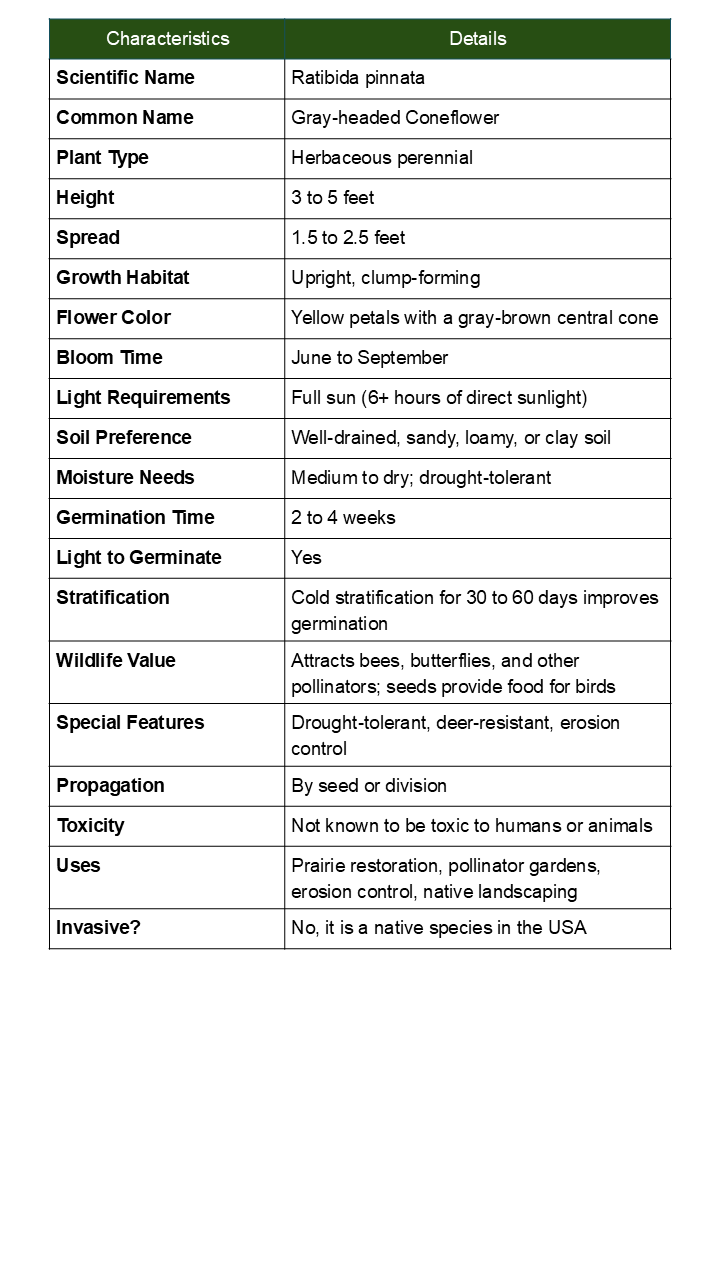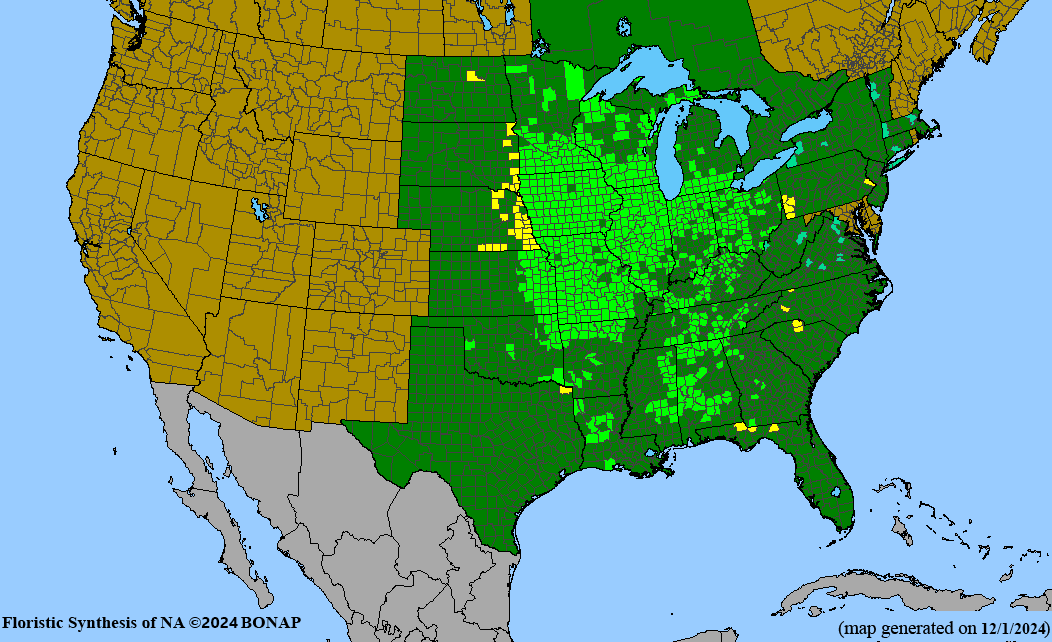Grey Headed Coneflower
Planting Instructions
Here is a detailed planting guide for Ratibida pinnata (Gray-headed Coneflower) for direct sowing outdoors (fall and spring) and indoor seed starting for spring transplanting, tailored for native planting and restoration efforts across the USA.
🌿 Ratibida pinnata Planting Instructions
Common Name: Gray-headed Coneflower
Plant Type: Perennial wildflower
Native Range: Central and Eastern North America
Pollinator Value: Excellent — attracts bees, butterflies, and other beneficial insects
☀️ Site Selection & Sunlight Requirements
Sunlight: Thrives in full sun (6–8+ hours/day)
Can tolerate light partial sun, but will have fewer blooms.
Soil Preferences: Prefers well-drained, loamy or sandy soils, but tolerates clay if not waterlogged.
Soil pH: Tolerates a range from slightly acidic to moderately alkaline.
🌱 Soil Preparation
Loosen soil to a depth of 6–10 inches.
Remove competing vegetation, grasses, and debris.
Amend soil only if extremely poor — overly rich soil may cause legginess.
Ensure proper drainage; avoid soggy or compacted soil.
🌾 Direct Sowing Outdoors – Fall or Spring
Fall Sowing (Recommended)
When: After first frost but before ground freezes.
Why: Seeds benefit from cold moist stratification over winter.
How:
Broadcast seeds on prepared soil.
Press into surface; cover lightly with 1/16 to 1/8 inch of soil.
Water lightly if soil is dry.
Allow winter freeze-thaw cycles to aid germination in spring.
Spring Sowing
When: After last frost when soil is workable.
Stratification: Recommended — 30–60 days of cold moist stratification will significantly improve germination rates.
How:
Sow stratified seeds in early spring.
Press lightly into soil or cover with a thin layer (1/16–1/8 inch) of soil.
Keep soil consistently moist until germination (typically 14–30 days).
🌱 Starting Seeds Indoors for Spring Transplanting
When to Start Indoors: 8–10 weeks before last frost
Stratification Needed: Yes — 30–60 days cold moist stratification
Mix seeds with moist vermiculite or sand and refrigerate at 34–40°F.
Scarification: Not required
Sowing Indoors:
After stratification, sow seeds on soil surface and press in lightly.
Do not deeply bury seeds — they need light for germination.
Maintain temps of 65–75°F.
Germination in 2–4 weeks after stratification.
Transplanting Outdoors: Harden off seedlings and transplant after danger of frost has passed.
💧 Watering
During Germination: Keep soil consistently moist but not saturated.
After Establishment: Moderately drought tolerant — water during extended dry periods for best performance.
Avoid overwatering, especially in heavy soils.
✂️ Maintenance Tips
Low-maintenance once established.
Deadheading is optional — can extend bloom period, but seed heads are attractive to birds.
Cut back stems in late fall or early spring.
May require staking in rich soils or windy sites due to tall growth (3–6+ feet).
Can be divided every 3–5 years if clumps become overcrowded.
❌ Is it Invasive?
Not considered invasive.
Can self-seed modestly, but is easily managed in most settings.
Excellent for meadow plantings, prairie restorations, and pollinator gardens.
🌼 Other Notes
Blooms in mid-to-late summer, often when other early natives have faded.
Works well with:
Liatris spicata, Echinacea purpurea, Coreopsis lanceolata, Monarda fistulosa, Asclepias tuberosa
Perfect for native landscapes, roadside revegetation, wildflower meadows, and butterfly habitats.



